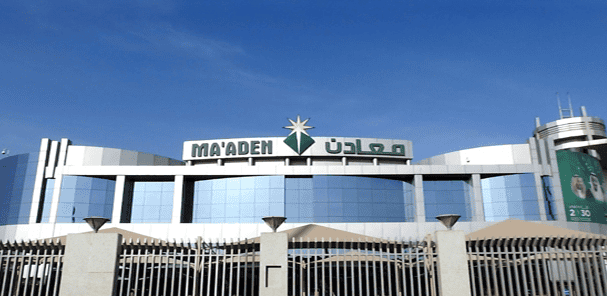Saudi Arabia’s state-owned mining powerhouse Ma’aden (Saudi Arabian Mining Company) has embarked on what could be its most ambitious growth plan since its founding nearly three decades ago. In a sweeping strategy refresh, the company announced plans to double its gold output by 2030 and to build an entire rare earths supply chain within the Kingdom, positioning Saudi Arabia as a new global hub for critical minerals. This bold initiative is not simply about expanding production; it is about redefining the role of mining in the Kingdom’s economy, turning it from a supporting industry into one of the main engines of diversification under Vision 2030. The sheer scale of the investment about $2.5 billion annually over the next five years shows Riyadh’s determination to accelerate economic transformation, reduce dependence on oil, and capture new opportunities in global markets.
Historical Trajectory: From Phosphates to Global Mining Ambitions
When Ma’aden was founded in 1997, its primary mandate was to unlock the Kingdom’s mineral wealth, which had long been overshadowed by its oil reserves. For the first decade, the company focused largely on phosphate production, capitalizing on Saudi Arabia’s vast reserves to become one of the world’s top suppliers of phosphate fertilizers. Today, phosphates remain the backbone of Ma’aden’s profitability, with billions in annual export revenues that feed global agricultural markets.
But Ma’aden’s ambitions began to expand in the early 2000s. The company launched gold operations, tapping into Saudi Arabia’s rich but underdeveloped deposits in regions like the Arabian Shield. Currently, its gold division operates several mines, producing around 700,000 ounces annually a respectable figure, but still small compared to global giants. The new target of doubling production by 2030 signals a dramatic scaling-up of exploration, development, and technological investment in this sector.
At the same time, Ma’aden has made steady progress in base metals, particularly copper. Copper is often called the “metal of electrification,” and demand for it is soaring as economies transition to renewable energy, electric vehicles, and advanced grid systems. By integrating Saudi Aramco’s geological data with its own exploration programs, Ma’aden is identifying promising copper deposits and positioning itself to meet one of the most urgent supply challenges of the next decade.
Rare Earths: A Strategic Bet
Perhaps the most transformative part of Ma’aden’s strategy is its decision to invest in rare earth elements (REEs), a group of 17 metals crucial for advanced technologies, from wind turbines and smartphones to fighter jets and electric vehicle batteries. At present, the global rare earth supply chain is overwhelmingly dominated by China, which controls over 80% of processing capacity. This concentration of supply has raised alarm in Washington, Brussels, Tokyo, and other capitals, especially as demand accelerates in the clean energy and defense sectors.
By moving aggressively into rare earths, Ma’aden is positioning Saudi Arabia as a potential strategic alternative to China. Earlier this year, the company signed a memorandum of understanding with MP Materials, the largest rare earth producer in the United States, to explore a fully integrated supply chain in Saudi Arabia. This would include everything from mining and refining to magnet manufacturing, a highly specialized segment of the value chain with enormous strategic significance.
For Riyadh, the benefits extend beyond economics. If Saudi Arabia can become one of the few countries outside China with a functioning rare earth ecosystem, it would dramatically increase its geopolitical leverage. Such a move would strengthen Saudi-U.S. ties, diversify global supply routes, and position the Kingdom as an indispensable partner in the world’s energy transition. But the risks are also significant: rare earth mining and processing are capital-intensive, technically complex, and environmentally challenging. Ma’aden will need both international expertise and domestic innovation to overcome these hurdles.
Integration with Vision 2030
The push into gold, copper, and rare earths is inseparable from the Kingdom’s Vision 2030 plan, which seeks to transform Saudi Arabia into a diversified, knowledge-driven economy. Officials estimate that the Kingdom’s untapped mineral resources could be worth $1.3 trillion, making mining one of the most promising sectors for future growth. By prioritizing mining, Riyadh hopes to create a “third economic pillar” alongside oil and petrochemicals.
For Ma’aden, this means more than just expanding extraction. The company’s strategy emphasizes downstream integration, ensuring that value is captured within the Kingdom rather than exported as raw ore. This involves investments in refining, smelting, and advanced manufacturing activities that create high-skilled jobs, stimulate research and development, and foster industrial clusters around mining hubs.
The plan also dovetails with regional development goals. Many of Saudi Arabia’s mineral deposits are located in underdeveloped provinces, where mining projects can catalyze broader economic activity. By building infrastructure roads, rail links, housing, power, and water facilities Ma’aden contributes not only to its own production goals but also to regional growth and social development.
Comparing with Global Mining Leaders
Ma’aden’s strategy increasingly mirrors the playbook of the world’s biggest mining multinationals such as BHP, Rio Tinto, and Glencore, which are racing to secure critical minerals needed for electrification and decarbonization. But unlike these companies, which operate in highly competitive capital markets, Ma’aden enjoys the backing of the Public Investment Fund (PIF), Saudi Arabia’s $900 billion sovereign wealth fund. This financial muscle gives Ma’aden an advantage in scaling quickly, absorbing risks, and pursuing long-term projects without being constrained by quarterly earnings pressure.
Another unique strength is Ma’aden’s ability to integrate upstream and downstream activities under one umbrella. While Western mining companies often focus on extraction and leave processing or manufacturing to others, Ma’aden seeks to build entire value chains. For example, its phosphate division is not limited to mining but extends into producing fertilizers and industrial products. The same model is now being applied to rare earths, where Ma’aden’s goal is not just mining but refining and magnet production.
If successful, this model could turn Saudi Arabia into a global center for advanced mineral industries, competing not only with traditional mining hubs like Australia and Canada but also with China’s integrated mineral ecosystems.
Financial Backbone and Recent Performance
The aggressive push is underpinned by Ma’aden’s solid financial performance. In the first half of 2025, the company reported a 73% year-on-year profit increase, reaching SR3.47 billion ($920 million). The surge was driven largely by strong phosphate sales, which continue to be the company’s most lucrative division. However, management has made clear that reliance on one sector is unsustainable in the long run, hence the push into gold, copper, and rare earths.
Ma’aden’s reinvestment strategy is also noteworthy. Rather than distributing windfall profits as dividends, the company is channeling earnings into capital expenditure. The commitment to spend $2.5 billion annually for at least five years represents one of the most significant mining investment programs in the region. This capital will fund exploration campaigns, mine expansions, processing plants, and infrastructure projects all of which position Ma’aden for long-term growth.
Challenges on the Horizon
Despite its advantages, Ma’aden faces a series of challenges that could complicate its ambitions. The most immediate is the complexity of rare earth processing, which requires advanced technology, skilled labor, and careful environmental management. Unlike gold or copper, rare earths are not difficult to mine but are extremely difficult to refine into usable form. Any misstep could lead to delays, cost overruns, or environmental backlash.
Regulatory frameworks also matter. Mining projects must comply with international environmental and labor standards if Saudi Arabia hopes to attract global partners and customers. This requires strengthening domestic institutions and governance around the mining sector, areas where Saudi Arabia is still building experience.
Competition is another concern. Countries like Australia, Canada, and the U.S. are rapidly expanding their own critical mineral industries, often with heavy government subsidies. Ma’aden will need to move quickly and demonstrate reliability to secure offtake agreements with global manufacturers of EVs, electronics, and renewable energy technologies.
Finally, the volatility of commodity markets introduces risk. A downturn in gold or copper prices, for example, could undercut the economics of new projects. While Saudi Arabia’s financial backing provides a cushion, market cycles remain an unpredictable factor that even the strongest miners cannot fully control.
Outlook
If Ma’aden successfully executes its growth push, Saudi Arabia will be well on its way to becoming a global mining powerhouse. The doubling of gold output, expansion into copper, and establishment of a rare earths supply chain could fundamentally alter the Kingdom’s economic landscape. Mining would move from a supporting industry to a central driver of growth, job creation, and international influence.
Globally, Ma’aden’s rise could have significant implications. It would diversify supply chains for critical minerals, reduce reliance on China, and give the Kingdom greater strategic weight in the energy transition. For investors, the company offers exposure not only to traditional commodities like gold but also to the technologies of the future, from EVs to renewable power.
The next five years will be decisive. If Ma’aden can deliver on its promises, it will not only reshape Saudi Arabia’s economy but also redefine the geopolitics of global mining. In an era where minerals are becoming the new oil, Riyadh’s bet on Ma’aden could pay off in ways that extend far beyond economics.



